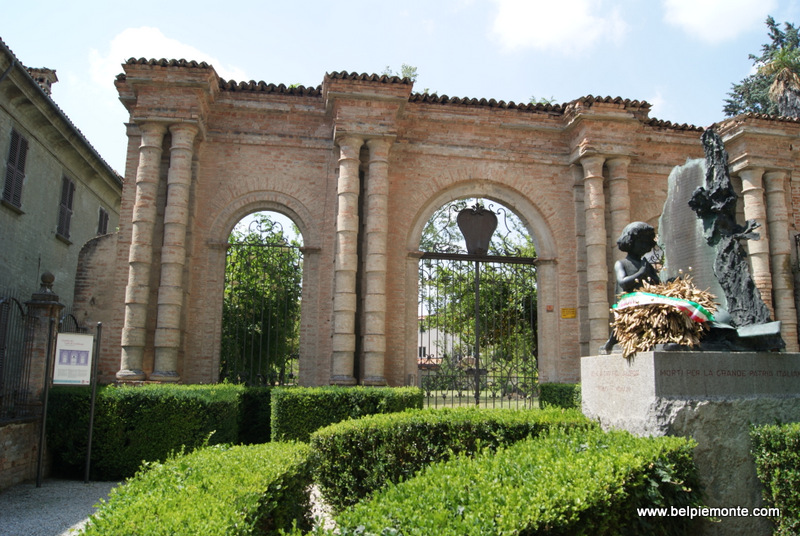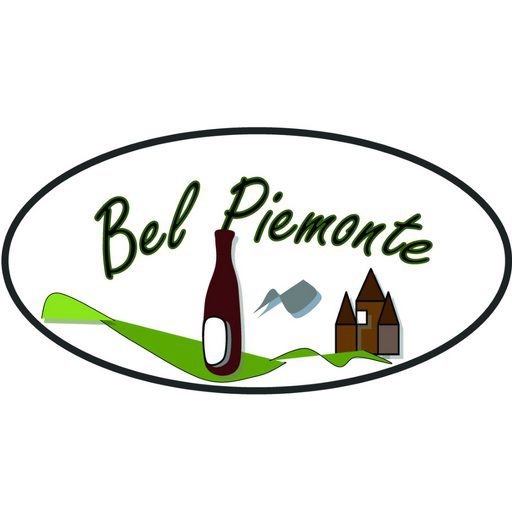Neive is 4,5 km far from Barbaresco and to reach it you basically need to go downhill and then to go uphill. Although it doesn’t have such marketing name like Barbaresco, or Barolo town, it’s also a popular tourist destination in Langhe region. Even in the middle of a hot day I met people taking photos, eating lunch in cozy restaurants. I noticed even drawing course students capturing this lovely Italian spot.

Neive is called the land of four wines: Barbaresco (made with the Nebbiolo grapes), Barbera (with the Barbera grapes), then Dolcetto d’Alba (with the Dolcetto grapes) and finally sweet dessert white wine Moscato d’Asti (with the Muscat variety).

The history of this small town dates back to Roman times, where there was a significant settlement on traffic route between Alba Pompeia (Alba) and Aquae Statiellae (Acqui Terme). At that time (about 1000 b.c) it was owned by the rich aristocratic family Gens Naevia and apparently the town name derives from their name. The most ancient monuments remained on the top of the borgo, called Pian Castello.
Unfortunately the castle (castello) has shared the same fate of many spectacular buildings in this part of Piedmont and it was destroyed (in 1276) during the battles between the towns of Asti and Alba. But we can still admire the old borgo plan, characteristic for Northern Italy, called ricetto (buildings were situated pentagonal on the top of the hill, fenced with a towered wall, sometimes with a fosse. Such constructed villages was supposed to defend goods (rural tools, harvest, cattle) from the enemy attacks).

If you start your visit from Piazza Cocito, Pian Castello is just few steps ahead and the first building you will see on your left will be fortified residence belonging to the family Cotti di Ceres (Casaforte dei Conti di Cotti di Ceres). The house was built on the beginning of 13th century on remains of Roman building. And what is interesting, at the end of 17th century the Piedmont oldest script about viticulture and winemaking was written within its walls.
Walking other few steps ahead you will reach Torre Comunale dell’Orologio. During the fights between Asti and Alba the tower was destroyed many times, but it was always reconstructed, and its latest appearance is dated on 1224.

The central point of the borgo is Piazza Italia, characteristic by colorful houses and some small restaurants (the food is very good and at affordable prices) situated on the square and nearby. The most beautiful and outstanding building, is Casa dell’Orologio. It was designed by local architect – Giovanni Antonio Borgese – in Rococo style.
Once it was Town Hall house (now Municipio is located vis-a-vis, in Palazzo Borgese – another example of masterpiece of the Neive architecture).
In general, present appearance of the old town is dated on 17th-18th century when influence families have built their residence, like Palazzo dei Conti di Castelborgo (18th century), for instance. I wasn’t inside, but I read the interior of the palace is beautifully decorated, it houses a spectacular wine collection and what’s more the first experiments to transform the Nebbiolo grapes into Barbaresco wine were carried in its basement. Next to Palazzo dei Conti di Castelborgo you can admire beautiful iron gateway (another piece of art of Giovanni Antonio Borgese) that in the past was an entrance to the gardens.

One building is not mentioned in travel guide, but still I was charmed by its beauty and perfectly elaborated balustrade (see on the picture below)…

Walking through Neive it’s impossible not to notice well-maintained vegetation decorating every corner of the town. Juicy green bushes, colorful flower pots look spectacular on red brick background. No wonder it is on the list of the most beautiful towns (borgo) in Italy. More information you can find on http://www.borghitalia.it/.

